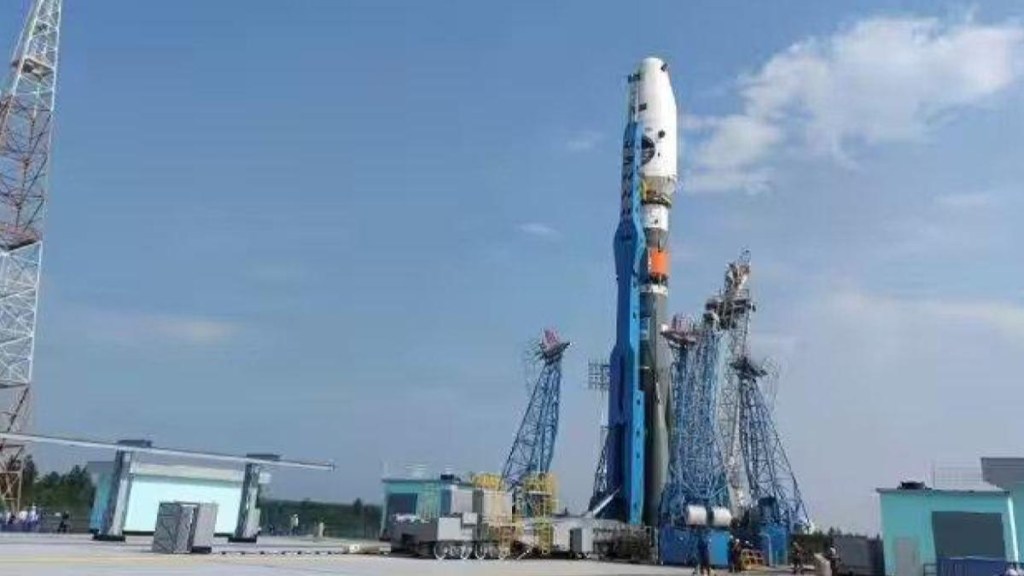On August 11, 2023, the Russian space agency Roscosmos is set to launch the Luna-25 robotic mission, a pioneering endeavour featuring a lander and rover unit destined for the Moon’s surface.
This mission holds monumental significance as it signifies Russia’s first lunar mission since 1976. While this upcoming feat coincides with India’s Chandrayaan-3 mission, which is currently in progress, it’s imperative to resist the temptation of drawing direct comparisons between these missions.
According to Dr Ajey Lele (Retd), consultant with Manohar Parrikar Institute for Defence Studies and Analyses, each lunar expedition, whether historical, ongoing, or prospective, is driven by its unique set of objectives and scientific goals.
He says that it is crucial to evaluate these endeavors within the context of the technical and financial capabilities of the respective space agencies, sidestepping unnecessary juxtapositions. Nevertheless, even rough approximations can provide valuable insights for shaping future missions.
Delving into the specifics of ISRO’s Chandrayaan-3 mission reveals a blend of strengths and limitations, particularly when juxtaposed with recent lunar programs from other nations.
The prolonged timeline of Chandrayaan-3’s journey to the Moon can be attributed to its intricate nature. Financial Express Online has reported earlier that India embarked on its lunar odyssey with the successful Chandrayaan-1 mission in 2008, which primarily involved an orbiter. This mission paved the way for India and NASA to jointly ascertain the presence of water on the Moon, making it a global milestone.
However, Chandrayaan-2 in 2019 aimed for a more complex objective: deploying an orbiter and a robotic unit consisting of a lander and rover. Regrettably, the lander and rover module experienced a crash landing, leading to only partial mission success. It’s worth noting that this mission was initially slated for around 2015 and was intended to be a collaborative effort between India and Russia. Due to internal issues, Russia’s participation fell through, requiring ISRO to navigate this mission solo.
Nearly a decade later, Russia is poised to make a solo return to lunar exploration with the Luna-25 mission. This venture entails a soft landing of robotic equipment on the Moon’s South Pole, with a projected operational span of one year. In contrast, Chandrayaan-3 is expected to operate for a mere two weeks.
Luna-25’s travel time to the Moon is approximately ten days, a testament to advancements in space travel capabilities. By contrast, the historic Apollo 11 mission which marked the first human landing on the Moon in 1969, took four days using the direct Translunar Injection trajectory.
NASA’s Artemis program seeks to rekindle human lunar exploration after nearly half a century. The uncrewed Artemis 1 mission achieved trans-lunar injection within minutes of launch, illustrating the agency’s technological prowess. In comparison, Chandrayaan-3 and Luna-25 took around 19 and 23 days respectively to reach the lunar orbit.
China’s lunar program has also surged ahead, boasting shorter travel times for its missions. As for India, the pursuit of cost-effective missions, exemplified by Chandrayaan-3, is confronted by payload capacity limitations. ISRO’s current inability to launch payloads exceeding 4 tons to geostationary orbit extends Chandrayaan-3’s journey to the Moon to approximately 40 days. This restriction impedes the deployment of larger payloads, curbing the scope of scientific experiments.
ISRO’s ambition for future lunar and Martian missions, as well as endeavours like a Venus mission and a space station, necessitates a potent launch system, suggests Lele. The ongoing research into semi-cryogenic technology holds promise for enhancing payload capacity, facilitating the launch of heavier satellites. However, India’s limitations in launcher capabilities could potentially hinder plans for future human lunar missions.
In essence, Russia’s lunar resurgence through the Luna-25 mission signifies a commendable stride. While comparisons provide insights, every mission is a distinctive entity. Chandrayaan-3’s progress exemplifies ISRO’s resourcefulness within budget constraints. The pursuit of India’s lofty space ambitions hinges on a robust launch infrastructure to propel future undertakings, impacting scientific research and satellite deployment.
